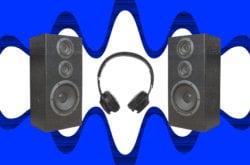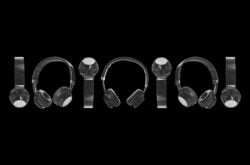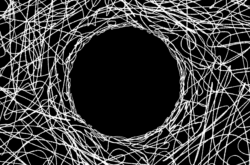“Which studio headphones should I get?”
This is one of the first questions a prospective home engineer must consider. As an engineer, you need to know your gear just as you know yourself; you need to understand its idiosyncrasies and personality. With that in mind, in this article we dive into three great studio headphones for producers and engineers who are on a budget.
When purchasing studio headphones (and gear in general), consider the trade-offs in your decision. If you don’t have hundreds or thousands of dollars to blow on top-of-the-line cans, don’t be discouraged. Realize that you’re trading affordability for a small amount of elite performance, but also realize that for 99% of people, this is a perfectly reasonable trade-off to accept.
One final note before we dive into the recommendations – if you’re planning on recording yourself, you’ll probably want to look for closed-back studio headphones. Although open-back designs offer clarity and room for your ears to ‘breathe,’ these headphones aren’t ideal for many studio applications because the sound can bleed out of them and into your otherwise pristine recording. Additionally, closed-back headphones offer a layer of physical blocking to isolate sound, resulting in a more consistent listening environment. In contrast, open-back headphones are more suitable for audiophile or critical listening purposes.
1. Sony MDR-7506
When outfitting the studio at Splice’s NYC headquarters, we decided to order several pairs of Sony MDR-7506 headphones for visiting musicians and engineers to use. These cans are ubiquitous for a reason, or rather, for several reasons. Their classic design looks at-home in any studio, they’re lightweight and easy to clean (which is useful for a shared space), and they deliver a solid performance, especially at a ~$100 price point.
As far as sound quality goes, the MDR-7506’s bass response is fine, if a bit underwhelming. But, the mids and high-end are clear and present, and the >2 kHz range is nicely boosted. Many consumer listening headphones are bass-boosted, but the MDR-7506 accentuates the higher frequencies. Although they might not be the most pleasant for easy listening, this accentuated response can be really useful for mixing and mastering applications in a similar way to the likes of NS10 monitors; if there’s a problem with the mix, it’s going to stick out like a sore thumb.
2. Sennheiser HD 280 PRO
The Sennheiser HD 280 PRO is my personal favorite from this list. I’ve had my pair for almost eight years, and after using them for so long I’ve become a serious devotee. The plastic design is surprisingly hardy; although the headphones feel light and comfortable, they’re still going strong after a lot of trips to the studio, plane rides, and cat nibbles. They feel comfortable on my head and provide excellent passive noise cancelling. The tradeoff here is that the ear cups are enormous and perhaps a bit unwieldy. I don’t think you’ll see anyone turning heads at Fashion Week wearing these, either.
Most important, however, is the sound quality. To my ears, the HD 280 PRO’s frequency response is the flattest of the three pairs of headphones on this list. The bass is well-balanced and the treble comes through accurately, though not particularly accentuated. I do have one quibble with the HD 280 PROs – the top-end highs are weak, meaning that I frequently have to remember to attenuate my hi-hats, vocal sibilance, or top percussion when mixing with them. All that said, this minor issue isn’t enough of a problem to keep me from highly recommending the HD 280 PROs for producers on a budget.
3. Audio Technica ATH-M50x
You’ve got to love the Audio Technica ATH-M50x. These are a little more expensive than the other options on this list (at around $150), but for the extra cash you get a truly delightful listening experience as well as a few other nice-to-haves like a detachable cable (handy if your cat likes to chew your cords – speaking from experience) or swiveling ear cups (useful if you’d like to use them for DJing as well). The ATH-M50x is also made of plastic, which is just par for this price range, but they feel solid and fold up nicely for protection during travel.
I really like listening to music on the ATH-M50X; probably more so than with the Sennheisers or Sonys. They’ve got a significant bass boost, delivering a rich, full, and immersive sound. As always, there’s a trade-off; keep in mind that a boosted bass response in your reference listening setup will translate to an attenuated bass in the final mix. Especially for beginners, however, this trade-off is actually kind of a blessing since leaving the bass too loud is a common beginner mistake. Out of this list, the ATH-M50x is probably the closest to a consumer listening headphone in terms of frequency response. For me, they weren’t the most comfortable due to the rigid plastic design, but depending on the size and shape of your head you may find them comfier.
Have you used any of these products? Do you have other suggestions or considerations to take into account when selecting a pair of studio headphones? Let us know in the comments, and otherwise, enjoy producing or mixing on any of these pieces of quality kit.
Explore royalty-free one-shots, loops, FX, MIDI, and presets from leading artists, producers, and sound designers:
December 2, 2020



